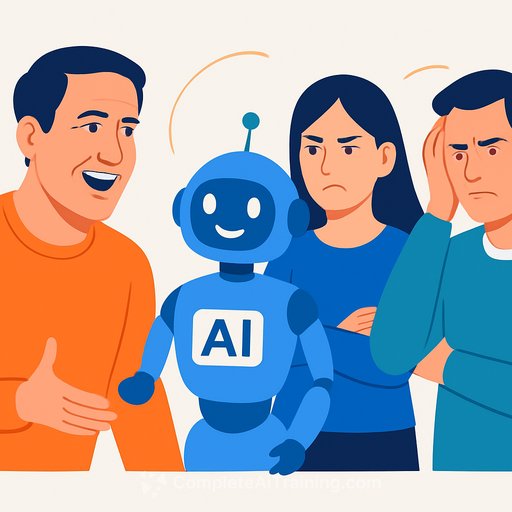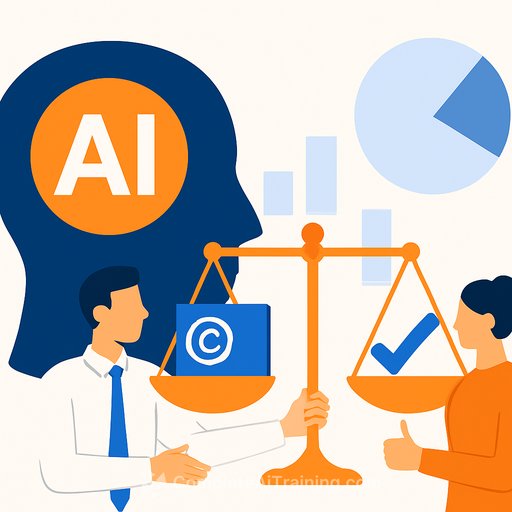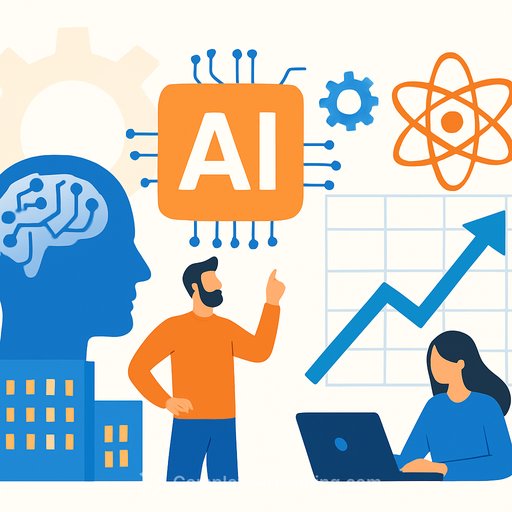Is Adobe's AI Alliance With Google Cloud Reshaping Its Creative Ecosystem Strategy?
Adobe MAX 2025 delivered a clear signal: Adobe is leaning into an open, multi-model creative ecosystem. By expanding its work with Google Cloud and YouTube, Adobe is pulling industry-leading AI directly into Creative Cloud, Firefly, and GenStudio-without forcing creators or enterprises to leave their trusted workflows.
The pitch is simple: faster content production, more customization, and tighter integrations with platforms where work is actually published. For creatives and product teams, this isn't a feature drop-it's a new operating model for how content gets made, approved, and shipped.
What Actually Changed
- Google's advanced AI models are being integrated across core Creative Cloud apps, alongside Adobe's own models.
- Firefly and GenStudio gain more flexibility for content generation, brand consistency, and versioning at scale.
- Deeper ties with leading ad and social platforms (including YouTube) bring production closer to distribution.
If you work in creative ops or product, the headline is choice: you can select the model that best fits the task-inside the tools your team already uses.
Why It Matters For Creatives
- Model flexibility: Pick the best model for image, video, copy, or variant generation based on quality, speed, and cost.
- Tighter workflows: Fewer tool switches from concept to channel-ready assets.
- Brand control: Use Firefly's guardrails while tapping partner models where they excel.
- Channel-native output: Create with distribution in mind-formats and specs aligned to ad and social endpoints.
Why It Matters For Product Teams
- Ecosystem strategy: Multi-model equals optionality-less risk of vendor lock-in and more room to optimize.
- Roadmap clarity: Plan for model routing, evaluation, and governance as core capabilities, not add-ons.
- Enterprise scalability: Standardize prompts, approvals, and usage policies across teams and brands.
For a quick look at the event and context, see Adobe's MAX hub and Google's AI overview:
Adobe MAX * Google Cloud AI
The Investor Angle (Condensed)
- Core thesis: Adobe's AI-heavy product velocity and partner model could lift growth and retention.
- Forecasts: Some analysts see 2028 revenue at $29.3B and earnings at $8.7B (from $6.9B), implying a fair value of $456.18-about 34% above the current price.
- Counterpoint: Bear cases peg 2028 revenue closer to $27B with margin pressure, questioning monetization of Firefly tiers.
- Bottom line: Execution on integrations and model quality will decide how much of that upside is real.
Practical Risks To Watch
- Integration complexity: Multi-model routing, brand governance, and asset rights need precise controls.
- Competition: Alternatives are improving quickly, narrowing the feature gap.
- Monetization: Will new tiers and usage pricing match how teams actually produce content?
- Short-term impact: Don't expect immediate lifts to subscriptions or margins while integrations mature.
Action Plan For Creative and Product Leaders
- Audit your pipeline: Map ideation → generation → review → distribution. Flag handoffs that stall throughput.
- Define model selection rules: Quality, speed, cost, IP safety. Document when to use Adobe vs. partner models.
- Standardize prompts and brand constraints: Templates, negative prompts, and usage guidelines that teams actually follow.
- Set measurement: Track cycle time, asset acceptance rate, and cost per approved variant.
- Pilot channel-ready workflows: Build presets for YouTube and key ad platforms to cut revision loops.
- Plan governance: Access controls, audit logs, and content credentials for enterprise compliance.
- Upskill your team: Train producers and PMs on multi-model thinking and prompt systems-not just features.
If you're building team capability around these shifts, explore focused training by role and by vendor:
AI courses by job * Courses sorted by leading AI companies
What This Signals
Adobe isn't betting on a single model. It's building an environment where multiple top-tier models sit inside familiar tools, guided by brand and workflow rules. If the integrations land cleanly, teams get speed without losing control. If not, the door opens for rivals to catch up.
For now, treat multi-model as the new default. Architect your stack and your team practices to match.
Your membership also unlocks:










